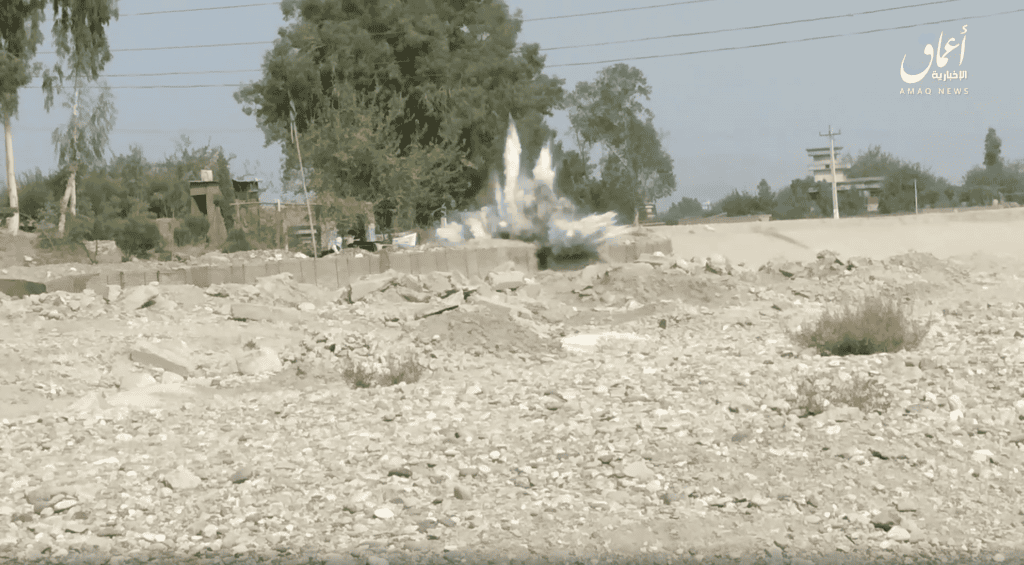
The Islamic State’s Khorasan Province has claimed responsibility for a series of bombings that targeted Taliban convoys throughout the city of Jalalabad, the capital of Nangarhar province. The group claims that 35 Taliban members were killed or wounded in the attacks, though the casualty figures could not be independently verified.
Amaq News Agency, a media arm for the Islamic State, released a single-page statement on the attacks, as well as a short video showing an improvised explosive device being detonated underneath a Taliban vehicle. A screen shot from the video can be seen above.
Amaq claimed that seven bombings were carried out on Sept. 18 and 19, with the final explosion occurring outside of the Indian consulate in Jalalabad. Other jihadists have assaulted the Indian consulate inside the city in the past, but there is no indication in Amaq’s reporting that the diplomatic location was deliberately targeted on this occasion.
The so-called caliphate’s men previously controlled a number of districts in Nangarhar. The Islamic State even seized ground in the Tora Bora Mountains, which were once home to Osama bin Laden.
As of early 2016, the Islamic State’s men reportedly controlled 10 districts in Nangarhar. However, their safe haven shrunk in the months that followed. They lost their turf after battling the U.S. military, security forces for the now deposed Afghan government, as well as rival jihadists from the Taliban and al Qaeda.
Even after losing its turf, the Islamic State retained a terror network in Nangarhar. That network received a new influx of personnel in recent months, as thousands of jihadists were freed from Afghanistan’s jails, including in Jalalabad.
On Aug. 26, an Islamic State suicide bomber blew himself up outside of the airport in Kabul. U.S. forces were overseeing a chaotic withdrawal from the country at the time. Dozens were killed in the bombing, including 13 U.S. service members.
The U.S. military launched a retaliatory drone strike against an Islamic State “planner” in Nangarhar one day later, but provided no real details on the target or the casualties inflicted.
Days later, the U.S. military conducted an air strike in Kabul, claiming it was necessary to neutralize an imminent Islamic State threat. On Sept. 17, U.S. Central Command was forced to admit that no terrorists were killed in the bombing. Instead, ten civilians, including seven children, were killed.
The Islamic State remains opposed to the Taliban’s Islamic Emirate. The group’s leaders claim that only their would-be caliphate is a legitimate government.







